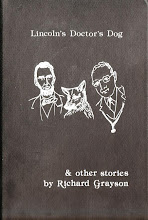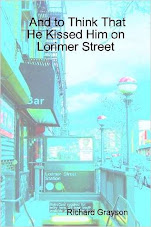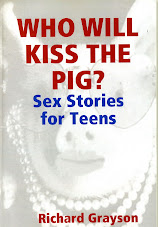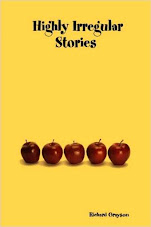
This afternoon we went to the Brooklyn College Library to take out some books by Donald Barthelme and Gish Jen and we came across a small exhibit, "The Roots of Modern Brooklyn: A Look at the 1970s and 1980s."

We lived in Brooklyn throughout the 1970s, leaving only for our first apartment, in Rockaway, in October 1979. During the 1980s we were in the borough from time to time; we were mostly living in Florida, with summers and some autumns on the Upper West Side, though we did sublet briefly in Sheepshead Bay in May-June 1981 and in Park Slope in August-November 1985.

Most of our friends with whom we graduated Brooklyn College with in the early '70s couldn't wait to leave, and many of them, and their parents, did. When we'd come back from Florida in late April or early May, we were appalled with how filthy the streets of Brooklyn were. There were attempts to clean things up.

The loss of the Dodgers, probably, was the evidence of the decline that came home to a little kid. Everyone we knew but our summer bungalow friends from the Bronx were Dodgers fans. Our memories of Ebbets Field are real but vague; the exhibit showed the Times article from when the stadium was torn down in 1960 (note the Gay Talese byline!).

The Navy Yard closed, of course, but 40,000 jobs were also lost in 1961 when the Army Terminal was shuttered.

Brooklyn had been in decline all our lives, but growing up, we didn't realize it. This last issue of the Brooklyn Eagle is from January 28, 1955, when we weren't even 4 years old, so we have no memory of seeing anyone ever read the paper.
In junior high, we got the Herald Tribune at school, like a lot of kids in our class, and we got the Long Island Press delivered every afternoon by our little brother's best friend's brother. We also remember the tabloid Daily Mirror - particularly the day Marilyn Monroe died - and the afternoon Journal-American and World-Telegram & Sun. But we remember the Brooklyn Eagle only as history.

The Eagle's final issue's lead headline: "Landlady Beaten to Death." We couldn't read it, but according to a New York Times article,
The story, about a 58-year-old Borough Park woman, began: "Her skull and face bones battered and crushed by repeatedly brutal blows." Another story was titled "Tot Survives 11-Story Tumble."
There was a publisher's note informing readers of the folding of The Eagle, calling it "the last voice that is purely Brooklyn."
"All the other Brooklyn newspapers fell by the wayside years go," the note read. "The borough seems doomed to be cast in Manhattan's shadow."

This exhibit, though, was meant to be upbeat, spotlighting "some of the poltical, business and community forces and their leaders and who were pivotal in the economic, social and physical growth of the borough and the revival of the revival of numerous neighborhoods." And, yeah, some things and places started to get better in the 1970s and 1980s, like Park Slope. On the other hand, crack came in pretty late in the period. This is from 1986:

And here's a poster for the March 1985 Jazz Festival.

In some ways we miss the grittiness and despair of the old days, but obviously things are better for most people now (check with the people who live in Brownsville and get back to us if you think we should have written "everybody" instead of "most people"). Here's a newsletter announcing the 1986 Flatbush Frolic.

We were in New York during the 1983 Brooklyn Bridge centennial and it did feel that things were changing, a little. There were yuppies. In Florida, we'd wear our powder-blue Brooklyn Bridge centennial T-shirt that we'd bought at the Brooklyn Museum store till the shirt got too worn to serve as anything but a rag. We watched the fireworks that accompanied the grand celebration from one of the high floors (in the 80s) of a tower at the World Trade Center, in the offices of the New York State Department of Transportation, where our friend Nina worked. Here is a photo of the celebration with Mayor Ed Koch, Brooklyn Borough President Howie Golden (not a favorite of our parents, who had to spend money to "grease some wheels" to do business in the 1970s) and Manhattan Borough President Andrew Stein (for whom Nina also worked; we were at the office the morning after John Lennon's murder, when she was writing a press release hailing "the poet of a generation" for the Borough President to issue).

We used to pick up The Phoenix, "the newspaper of brownstone Brooklyn," in the late 1980s when we were visiting Park Slope or Brooklyn Heights during the summer, usually when we went to between where we stayed on the Upper West Side and our grandmother's co-op in Rockwaway, where we spent a couple of days each week. Here are some Phoenix photos of the Crown Heights crisis.

On a board labeled "Brooklyn's People Power," the exhibit noted, "Ultimately, it was the power of ordinary people that revived Brooklyn's proud but struggling neighborhoods." Here's a poster, undated, from the Crown Heights Neighbors Coalition.

The exhibit was well-crafted, though it seemed to slight the 1970s and to cheerlead a bit. You need a Brooklyn College ID to get into the library to see it, or indeed, on campus. The world of Brooklyn may have been worse in the 1960s and 1970s but anyone could walk on campus in those days. As a Midwood student in1966-68, we used to walk through the college as a shortcut between our high school and the B41 bus at the Junction.



















































































